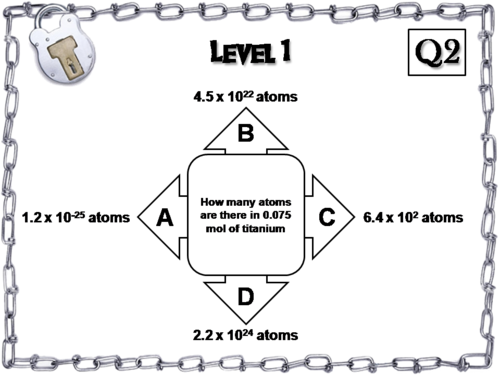Mole conversions are a fundamental concept in chemistry. They allow us to relate the number of particles (atoms, molecules, ions) to mass and volume. Understanding them is crucial for performing stoichiometric calculations. It is also important for success in chemistry.
What is a Mole?
The mole is the SI unit for measuring the amount of a substance. One mole is defined as exactly 6.02214076 × 1023 elementary entities. These entities can be atoms, molecules, ions, or other specified particles. This number is known as Avogadro's number (NA). Think of the mole like a "chemist's dozen," just a much larger number.
Avogadro's number provides a bridge between the microscopic world of atoms and molecules. It also connects it to the macroscopic world of grams and liters that we can measure in the laboratory. This connection is what makes mole conversions so powerful.
Molar Mass
Molar mass is the mass of one mole of a substance. It is expressed in grams per mole (g/mol). For elements, the molar mass is numerically equal to the atomic mass found on the periodic table. For compounds, you calculate it by summing the molar masses of all the atoms in the chemical formula. This is an important step in mole conversions.
For example, the molar mass of water (H2O) is calculated as follows. Two hydrogen atoms (1.01 g/mol each) and one oxygen atom (16.00 g/mol). Therefore, (2 * 1.01 g/mol) + (1 * 16.00 g/mol) = 18.02 g/mol. The molar mass of water is 18.02 g/mol.
Mole-Mass Conversions
Converting between moles and mass involves using the molar mass as a conversion factor. If you are given the mass of a substance and need to find the number of moles, divide the mass by the molar mass. If you are given the number of moles and need to find the mass, multiply the number of moles by the molar mass. It is important to pay attention to units.
For example, how many moles are there in 54.06 grams of water (H2O)? We know the molar mass of water is 18.02 g/mol. Moles = Mass / Molar Mass = 54.06 g / 18.02 g/mol = 3.00 mol. Therefore, there are 3.00 moles of water in 54.06 grams.
Another example, what is the mass of 0.500 moles of sodium chloride (NaCl)? We know the molar mass of NaCl is 58.44 g/mol. Mass = Moles * Molar Mass = 0.500 mol * 58.44 g/mol = 29.22 g. Therefore, the mass of 0.500 moles of sodium chloride is 29.22 grams.
Mole-Particle Conversions
Converting between moles and the number of particles involves using Avogadro's number (NA). If you are given the number of particles and need to find the number of moles, divide the number of particles by Avogadro's number. If you are given the number of moles and need to find the number of particles, multiply the number of moles by Avogadro's number. Remember that particles can be atoms, molecules, or ions depending on the context.
For example, how many molecules are there in 2.0 moles of carbon dioxide (CO2)? Number of molecules = Moles * Avogadro's number = 2.0 mol * 6.022 x 1023 molecules/mol = 1.204 x 1024 molecules. Therefore, there are 1.204 x 1024 molecules in 2.0 moles of carbon dioxide.
Another example, how many moles are there in 3.011 x 1023 atoms of gold (Au)? Moles = Number of atoms / Avogadro's number = 3.011 x 1023 atoms / 6.022 x 1023 atoms/mol = 0.500 mol. Therefore, there are 0.500 moles of gold in 3.011 x 1023 atoms.
Mole-Volume Conversions (for Gases at STP)
At standard temperature and pressure (STP), one mole of any ideal gas occupies a volume of 22.4 liters. This is known as the molar volume. STP is defined as 0°C (273.15 K) and 1 atm pressure. This relationship allows for easy conversion between moles and volume for gases at STP.
If you are given the volume of a gas at STP and need to find the number of moles, divide the volume by 22.4 L/mol. If you are given the number of moles of a gas at STP and need to find the volume, multiply the number of moles by 22.4 L/mol. This conversion only works at STP conditions.
For example, what is the volume occupied by 0.25 moles of oxygen gas (O2) at STP? Volume = Moles * Molar Volume = 0.25 mol * 22.4 L/mol = 5.6 L. Therefore, 0.25 moles of oxygen gas occupies 5.6 liters at STP.
Another example, how many moles are there in 11.2 liters of nitrogen gas (N2) at STP? Moles = Volume / Molar Volume = 11.2 L / 22.4 L/mol = 0.50 mol. Therefore, there are 0.50 moles of nitrogen gas in 11.2 liters at STP.
Putting it All Together
Mole conversions are essential tools in chemistry. They allow us to quantify chemical reactions. Understanding molar mass, Avogadro's number, and molar volume are crucial. Practice is key to mastering these conversions.
Remember to always pay attention to units. Make sure to use the correct conversion factors. With practice, you'll be able to confidently navigate any mole conversion problem. Good luck!

